J1939 Data Logger - Easy Truck Fleet Telematics (WiFi, 4G)
Need to collect data from your heavy-duty vehicle fleet?
In this intro you'll learn the top 4 benefits of truck telematics - and how to get started.
You'll also see how the CANedge2 enables modern J1939 telematics - with zero monthly fees and 100% free software/APIs (incl. customizable dashboards):
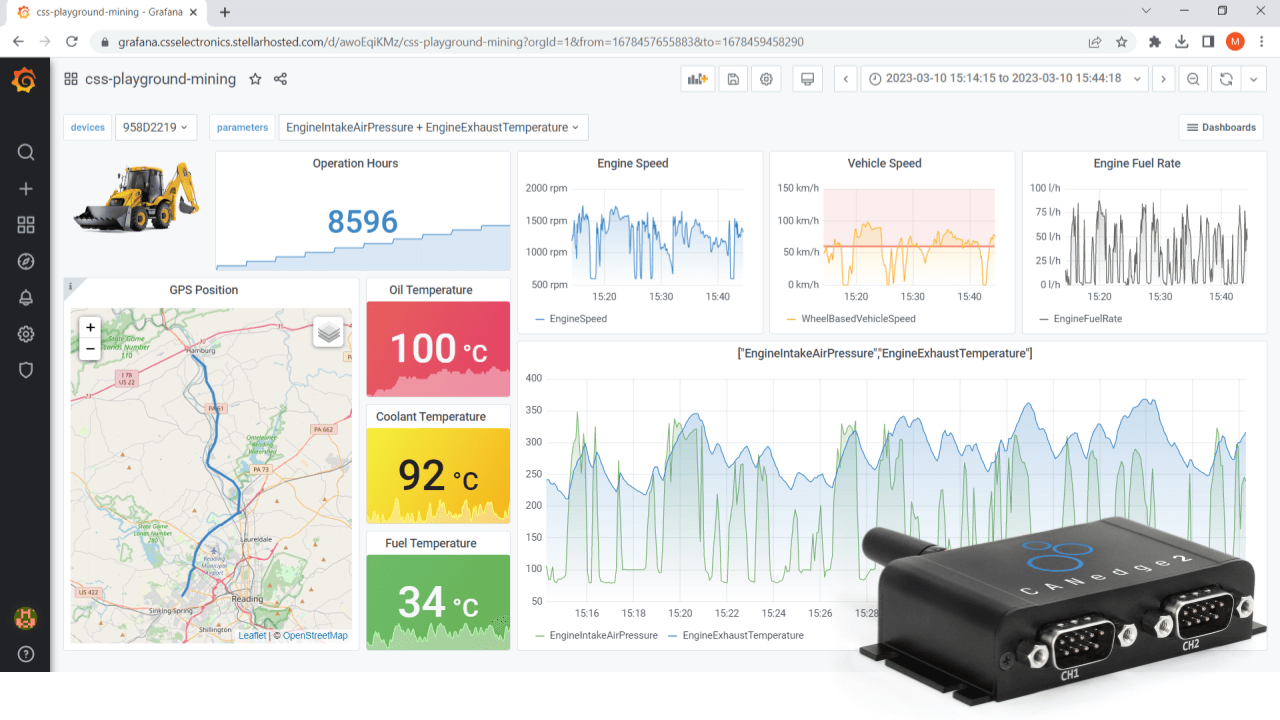
See also our 4 min intro video above!
If you're new to vehicle telematics and fleet management, consider below basic definition:
The goal of vehicle telematics is to collect vehicle, driver & environmental data
— and use
the data to optimize fleet operations
Vehicle telematics is commonly used in heavy-duty fleet management (trucks, buses, construction, mining, ...), prototype field testing and light trucks/service cars (delivery vans, postal services, police cars, taxis, ...). It is used by both vehicle OEMs (Original Equipment Manufacturers) and end users (e.g. construction site managers, fleet managers etc.). In some cases, the telematics system is owned by the OEM and served to an end user in the aftermarket - while in other cases, an aftermarket user may set up their own fleet management system.
A Telematics Control Unit (TCU) is a telematics device installed in a vehicle, facilitating the tracking of data from the vehicle.
Most telematics control units support the following features:
- GPS tracking: The TCU often records GPS data to track the vehicle position
- WiFi/3G/4G/GSM: The TCU needs to transfer the data to a server for processing
Today, most truck fleet management involves simple TCUs that communicate GPS data to enable route optimization and planning. However, these basic telematics systems typically do not collect data from the vehicle sensors (i.e. J1939 data).
Advanced telematics control units like the CANedge may support the following:
- CAN bus data logging: Some TCUs support logging of CAN bus data, incl. SAE J1939 and FMS
- Edge processing: A TCU may need to perform 'edge processing' of the data (filtering, compression, triggers, ...)
- Memory: Some TCUs have memory buffers (e.g. an SD card) to buffer data in zones with no connectivity
- Over-the-air updates: To enable vehicle fleet management at scale, over-the-air updates of firmware/configs are required
- Data requests: It may be relevant to enable requesting of data via CAN bus, e.g. to log diagnostic trouble codes (DTC)
- Modularity: Often it is necessary to add external sensors (e.g. temperature, ...) to the TCU (e.g. communicated via CAN)
- Security: Modern TCUs should support secure telematics, incl. TLS data transfer, data encryption etc
If you have e.g. 200+ telematics control units deployed in the field, you'll need a way to monitor, track and manage all of them.
A telematics platform should support the following features:
- Enable users to login to the server endpoint where the telematics data is stored
- Enable easy access to the data uploaded by each telematics control unit
- Provide an interface for updating the configuration/firmware of each TCU
- Provide a status dashboard to monitor devices, SD storage%, data uploads etc
CANcloud is a 100% free browser based open source telematics platform designed for use with the CANedge2. It enables the above features, while also offering full customization (incl. easy company branding).
There are different end users of vehicle telematics data, including below examples:
- Fleet managers: Plan routes, reduce truck fuel costs, schedule maintenance etc.
- OEM engineers: Use high-frequency CAN/J1939 data for e.g. R&D and diagnostic
- Researchers: Collect data on e.g. driving behavior, costs, emissions etc.
A common way to present data is through browser based telematics dashboards. Here, the data is typically processed on a backend server and pushed to a database. As an example, the CANedge2 data can be easily integrated with the open source Grafana dashboard tool. This enables 100% free and customizable telematics dashboards to visualize e.g. truck fleet telematics data.
For more in-depth data analysis (e.g. diagnostics), specialized CAN software/APIs may be required. Here, the CANedge2 enables easy analysis via free software like the asammdf GUI - or via popular tools like Vector CANalyzer and PCAN Explorer using simple data converters. Further, the Python API enables large-scale automated data processing (incl. e.g. CAN bus DBC decoding via J1939 DBC files).
Top 4 benefits of J1939 fleet telematics
Truck telematics & vehicle fleet management is increasingly used by e.g. heavy-duty vehicle OEMs - below we list the top benefits.

Fewer breakdowns & better diagnostics
J1939 data can help minimize breakdowns and downtime via predictive maintenance - as well as diagnose rare issues, on-site or remotely

Reduced fuel & maintenance costs
Fuel cost can comprise up to 50% of heavy duty fleet costs. Here, J1939 data can be used in optimizing routes, idling, driver behavior and fuel theft

Simpler compliance & dispute handling
By auto-collecting your vehicle data you'll simplify compliance (e.g. emissions, ELD/HOS). For OEMs, this also enables data-based dispute processing

Faster time-to-market
Real field usage data is extremely valuable to OEM development teams - e.g. for equipment debugging or fleet prototype testing
Which benefits are relevant to your J1939 telematics use case? Reach out for free sparring!
Contact usWhy use the CANedge J1939 logger?
The CANedge CAN bus data logger offers optional GPS/IMU, WiFi and/or 3G/4G - ideal for heavy-duty fleet telematics:
Log data out-the-box. Standalone. Link your vehicle to your server in <2 minutes
Extractable 8-32 GB SD. 2xCAN/LIN. CAN FD. Zero data loss. 50 μs RTC. Error frames. MF4
Only 8 x 5 x 2 CM. 100G. Robust alu enclosure. 5+ LEDs. Configurable 5V power out (CH2)
Built-in GPS/IMU. 3x accuracy via sensor fusion. Position, speed, distance & more
With the CANedge, vehicle telematics involves below steps:
#1 Setup your server: Set up your local/dedicated/cloud S3 server via our guide in <5 min
#2 Configure: Configure your device with your server and WiFi/SIM details and e.g. filters, triggers or transmit lists
#3 Record: Connect the device to your vehicle J1939 connector (e.g. using a DB9-J1939 adapter) to log raw J1939 data
#4 Transfer: The device connects to your WiFi access point(s) or 3G/4G to auto-push log files to your server
#5 Process: Use the free software/APIs to process your data - e.g. converting it to other formats (ASC, TRC, CSV, ...) or DBC decoding it to physical values via asammdf or the Python API
#6 Visualize: Finally, you can also visualize your data and set alerts via free, customizable browser dashboards

Traditional telematics may be a good fit for some - but it comes with a number of downsides:
- Low specs: Most telematics dongles do not enable the type of pro spec logging required by vehicle OEMs
- High costs: You pay a monthly fee which quickly adds up - incl. potential vendor lock-ins
- Complex platforms: One-size-fits-all platforms typically entail significant complexity - and may not fit your use case
- No data ownership: Your sensitive data is sent to the telematics provider's server, not your own
- Poor security: Many telematics solutions struggle with security issues, leaks and GDPR/CCPA challenges
The CANedge has been designed to offer a different solution:
- Pro specs: The CANedge is a unique combination of professional-grade CAN logging - with the convenience of telematics
- Zero fees: You only pay for the hardware - all software/APIs are 100% free and open source
- Simple-to-use: The device is simple-to-use and lets you start small, gradually scaling to more advanced setups
- Zero lock-in: Data is uploaded to your own server via your WiFi access points or 3G/4G - with no vendor lock-in
- Interoperable: data & config files use standard formats (MDF4, JSON), easing integration and enabling use of your favorite tools
- Secure: The device can encrypt data & passwords on the SD (e.g. for GDPR/CCPA compliance) - and upload data via HTTPS
To learn more about the advantages, contact us.
The CANedge2 connects via WiFi, while the CANedge3 connects via 3G/4G (via your own SIM card). This lets you select the option that best suits your deployment needs (and you can of course mix the two variants).
Save costs
The CANedge2 can log data to an SD card for extended periods without WiFi access. Once it returns to a garage with a WiFi router, it can automatically upload the data (and free up the SD) - without 3G/4G transfer costs
Existing 3G/4G
In e.g. transit buses there are often existing WiFi access points available, which the CANedge2 can utilize - thus avoiding the need for a separate SIM card. This is also often the case in truck fleet telematics
Mobile assets
In many use cases, however, on WiFi is available - and here the CANedge3 is the best solution. Simply insert your own SIM card and the device will push data to your server automatically
Local server
In some use cases, you may want to transfer data to a local server. The CANedge2 can connect to a local WiFi router and push data to a local server, e.g. on a PC or Pi. This is often used for warehouse and mining telematics
Generally, the CANedge is often deployed by automotive OEM engineers for use in prototype fleet testing. Here, there is often a need to transfer huge amounts of data - but not necessarily in near real-time. For this type of use case, the unique combination of a pro specs CAN logger with SD card and WiFi/LTE telematics capability is ideal.
When selecting the right CAN logger for your use case, it's important to consider whether you need WiFi/LTE or not. The CANedge2/CANedge3 is ideal for J1939 telematics, but for some use cases you may prefer the CANedge1 J1939 logger. The CANedge1 is identical to the CANedge2/CANedge3, except that it does not offer remote data transfer. The CANedge1 may be sufficient if you e.g. need to only collect data rarely, from few vehicles - or on an event-based basis. For example, some end users deploy the CANedge1 as a J1939 blackbox logger and only collect data if an issue occurs. If you're in doubt which option you need, please contact us.
Some J1939 applications have built-in GPS data that is communicated via the CAN bus - and which can be decoded using a standard J1939 DBC. However, other vehicles do not broadcast this information by default. If you need to add GPS and/or 3D inertial sensor data to your J1939 telematics data, you can use a CANedge incl. GNSS/IMU.
Software example: J1939 telematics dashboards
With the CANedge2, you can easily set up free, custom browser dashboards for visualizing your J1939 data and setting alerts.
You can also combine your J1939 data with GPS/IMU data by using e.g. a CANedge2 incl. GNSS/IMU.
Check out the online playground - or learn more in our intro!
playground learn moreGet your 'J1939 Data Pack'
Want to work with real J1939 data?
Download your 'data pack' including:
- 3 intros to J1939 (PDF)
- Our J1939 DBC demo (incl. 5 extra SPNs)
- 400+ MB of J1939 data from 15+ vehicles
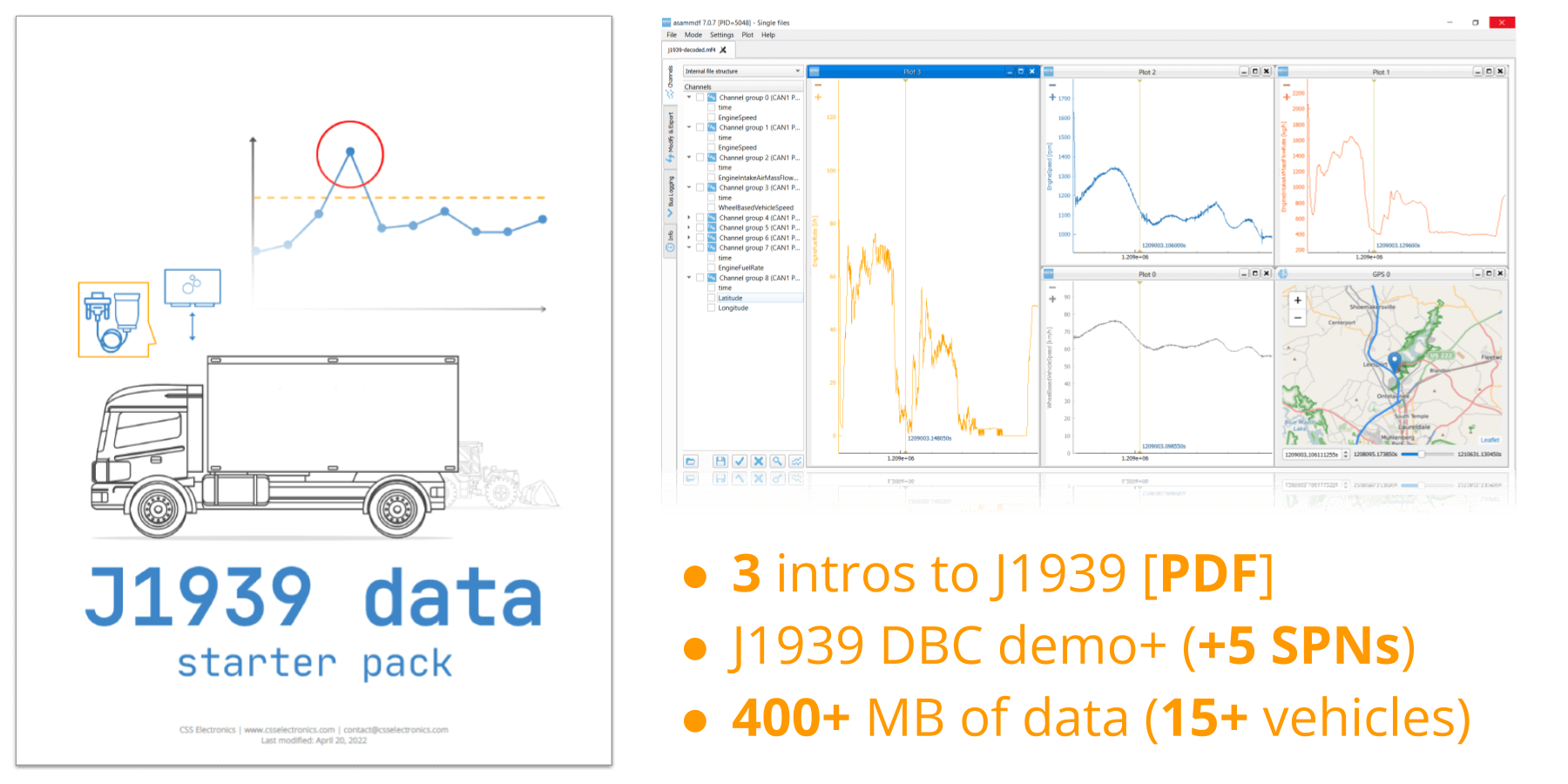
J1939 telematics use case examples
Below we provide example use cases to illustrate how the CANedge2 can be used in practice.
On-road transit bus data via in-vehicle WiFi
Need to monitor operational data across a fleet of transit buses?
In most buses, the CANedge2 can be connected easily via a DB9-J1939 adapter - and will start logging raw J1939 data to the SD card. If the transit bus has an in-vehicle WiFi access point, the CANedge2 can use this to get online and auto-push data to a dedicated server or cloud in near real-time. Here, data can be analyzed e.g. ad hoc via your favorite CAN tools or in the free asammdf GUI. You can also set up dashboards to enable low cost WiFi fleet management.


Predictive maintenance via periodic uploads
Need to predict breakdowns across construction or mining vehicles?
Some heavy-duty vehicles operate e.g. in mines with no 3G/4G connectivity (see e.g. our mining telematics intro). Others operate in specific areas like construction yards or warehouses. In these cases, the CANedge2 can be set up to connect via 1-4 WiFi access points in the area. When a vehicle gets in range of a WiFi access point, data recorded on the SD card is auto-pushed to your server (local, dedicated or cloud). Here, it can be converted to physical values using a J1939 DBC file and the free APIs - e.g. to spot irregular patterns that indicate issues.
Near real-time fleet monitoring via 3G/4G
Need to get data from a fleet of vehicles via cellular uploads?
As an OEM, collecting quality field data from J1939 mobile assets is vital to many use cases - e.g. to provide insurance, handle disputes, for development or diagnostics. With the CANedge3, data can be uploaded via 3G/4G to your own server, using your own SIM card. Further, devices can be easily configured/updated over-the-air with a few clicks. If devices go out-of-coverage, data is simply buffered on the SD card until 3G/4G coverage is back. Further, the CANedge3 has an internal GPS/IMU, adding information like position, speed, trip distance, acceleration and more to your log files.

Case study: J1939 telematics

Learn how Antu Energia uses the CANedge2 to remotely collect CAN/J1939 from heavy duty trucks and buses. Data is uploaded via a 3G/4G access point to their own AWS S3 cloud server for use in e.g. analyses, dashboards and script automation.
"CSS Electronics devices/software have been an absolute cornerstone to the success of many of our projects - and the customer service is one of the best I've ever had"
full case study 100+ case studiesJ1939 data from a truck
Below you can download CANedge J1939 sample data.
You can also download the free software and try out the process of decoding the raw J1939 data with our J1939 DBC demo.
Raw J1939 & DBC Decoded J1939 Software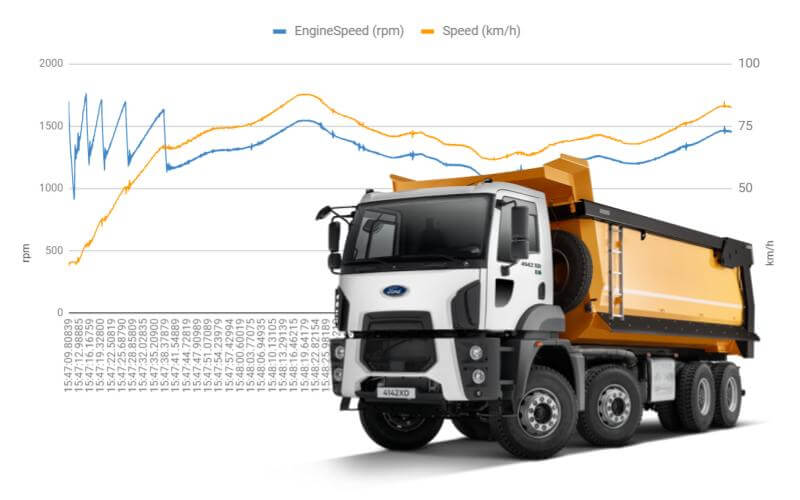
FAQ
First, note that most heavy-duty vehicles use the SAE J1939 protocol for their CAN bus communication. This means that most data parameters are standardized and can be converted to human-readable form using a J1939 DBC file.
When connecting a J1939 logger, you may use the 9-pin J1939 connector found in most heavy duty vehicles - or you can directly log from the CAN wires via induction using e.g. a CANCrocodile as intermediary.
The method of connecting the logger has implications: Using induction, for example, does not allow the logging device to request specific J1939 PGNs from the CAN bus.


Further, different CAN devices use different methods for uploading data. Some have built-in SIM cards (like the CANedge3), while others connect via WiFi (like the CANedge2).
Finally, for the data processing, some telematics solutions send data to the telematics supplier's cloud server for processing. In contrast, the CANedge2/CANedge3 sends data to your server. You can process the data via the free open source software/API tools.
Most commercial trucks and heavy duty vehicles use the SAE J1939 protocol (or the derived FMS standard) for the vehicle CAN bus sensor network. A CAN logger can therefore serve as a truck data logger, assuming it can record the raw CAN bus data (which will in this case be equivalent to J1939 data).
In contrast to e.g. passenger cars, this means that the method for converting data to physical values (aka human-readable form) is standardized across many brands, years and manufacturers. From a vehicle data logging perspective, this allows end users (e.g. fleet managers or operators) to get data for their fleet management systems, without having access to the proprietary conversion rules owned by the OEMs (original equipment manufacturers).
To decode raw J1939 data from e.g. a truck or tractor, you'll need a database of conversion rules. Typically, a J1939 DBC file is used for this purpose. A J1939 DBC file takes outset in the official SAE J1939 standards, which provide conversion info for a large share of the data that is potentially available in a given vehicle.
However, most vehicles also use a number of proprietary parameters - this data still conforms to the J1939 standard, but you'll need to reverse engineer the CAN data to identify how to interpret these specific parameters.
With that in mind, we've listed below some examples of data parameters that may be available in J1939 heavy duty vehicles:
- Vehicle Speed
- Engine RPM
- Tachograph Data
- Fuel Consumption (Per Km, Per Hour)
- Tire Pressure
- Temperatures (Oil, ...)
- Throttle Position
- Battery Voltage
- GPS Position (if built-in)
- Mass Flow Rate
- Brake Position
- Engine Avg. Fuel Ecnomy
- ABS Active
- Engine Exhaust
- Engine Torque
- Steering Wheel Angle
- Gear Position
- Door Lock Status
- Vehicle Make/Model/Serial/VIN
- Hydraulic Pressure
- Emergency Braking Active
- Pitch/Roll Angle
- Oil Level & Pressure
- Fuel Level
- Trip Counter
- Coolant Temperature
- Cargo/Trailer Weight
- Diagnostic Trouble Codes (DTCs)
If you've logged a range of CAN IDs from your truck, bus, harvester or other J1939/FMS vehicle, you can identify what J1939 PGNs are contained in your data. To do so, use our CAN ID to PGN converter or learn more on our J1939 DBC page.
Yes, the CANedge2 is basically a CAN bus data logger - meaning that it can record raw CAN data from any high speed CAN bus (ISO 11898-2) application. This includes practically all vehicles, including car fleets like taxis, police cars, ambulances etc.
Typically you'll then log OBD2 data, which can be seen as the equivalent to J1939 data - but for passenger cars.
If you're interested in car fleet management, check out our OBD2 data logger article.
The ELD mandate is a US regulation that specifies that operators of certain commercial vehicles will need to use electronic logging devices (ELD) to monitor driver activity. This can include operational data like hours of service (HOS). It basically replaces the requirement for paper log books.
The CANedge can be a simple low cost method for storing these logs by recording the relevant J1939 parameters - either to the SD card, or alternatively transferring the data to your own server for automated compliance. To learn more, contact us.
Ready to start your J1939 telematics pilot?
Get your CANedge2 today!
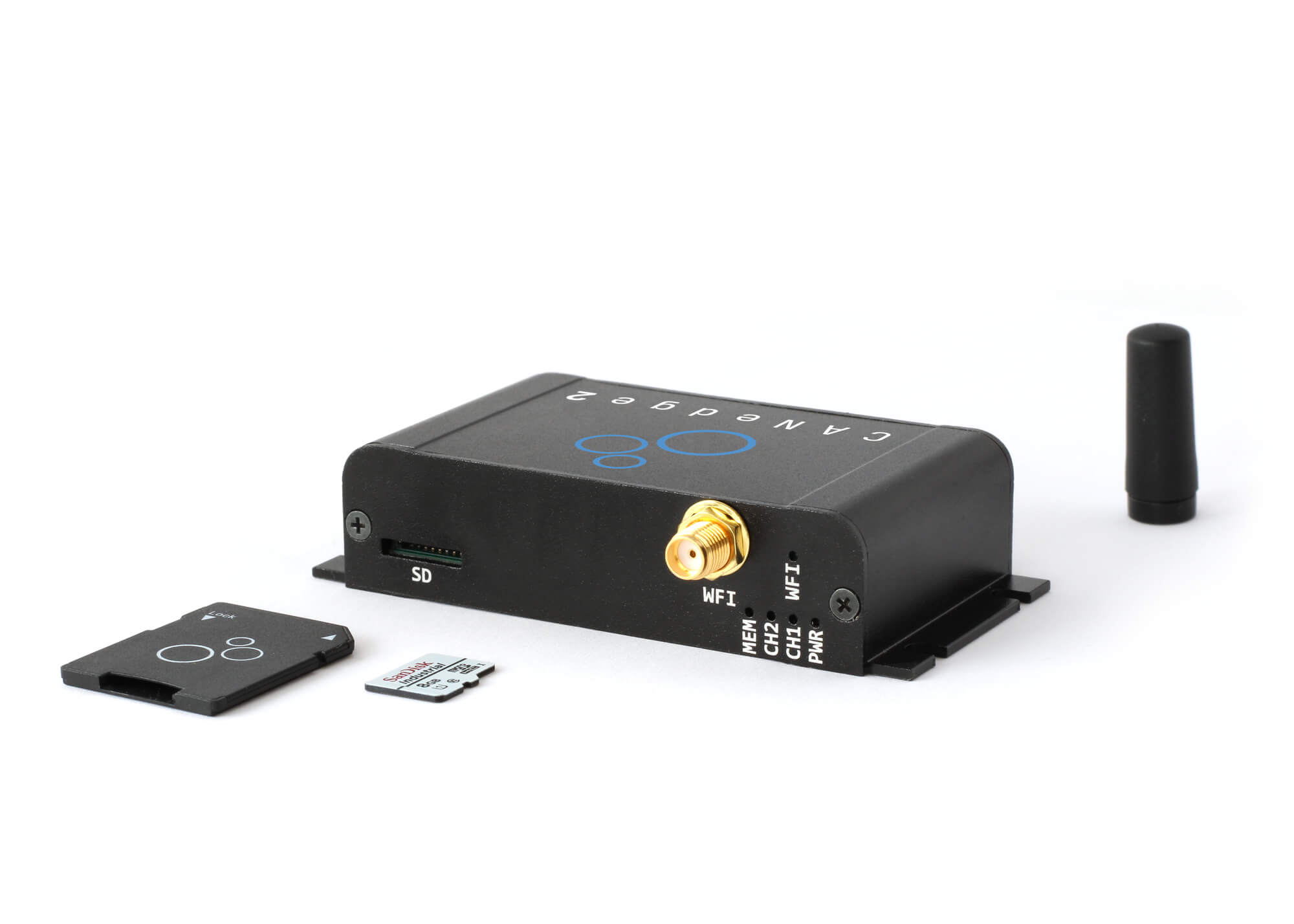 Learn more about the CANedge2
Learn more about the CANedge2
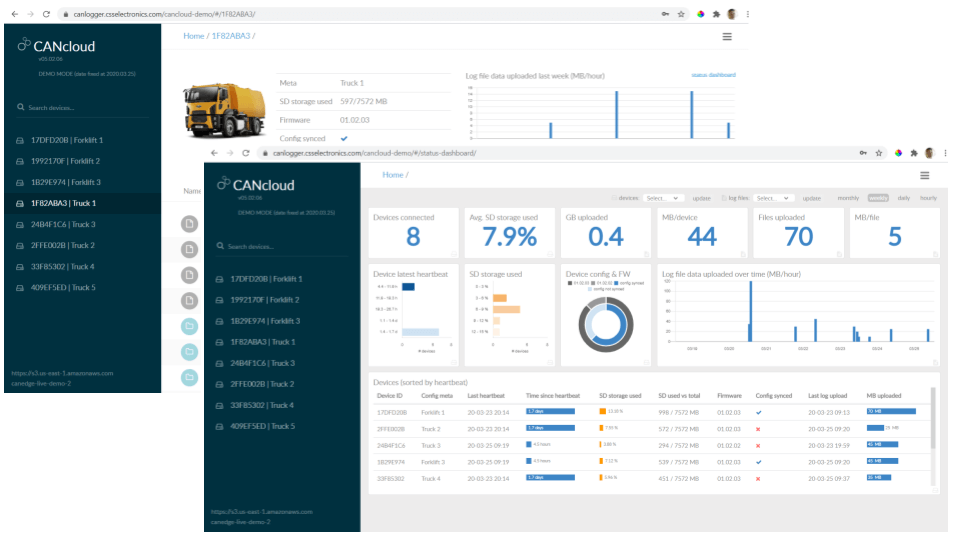 Learn more about CANcloud
Learn more about CANcloud 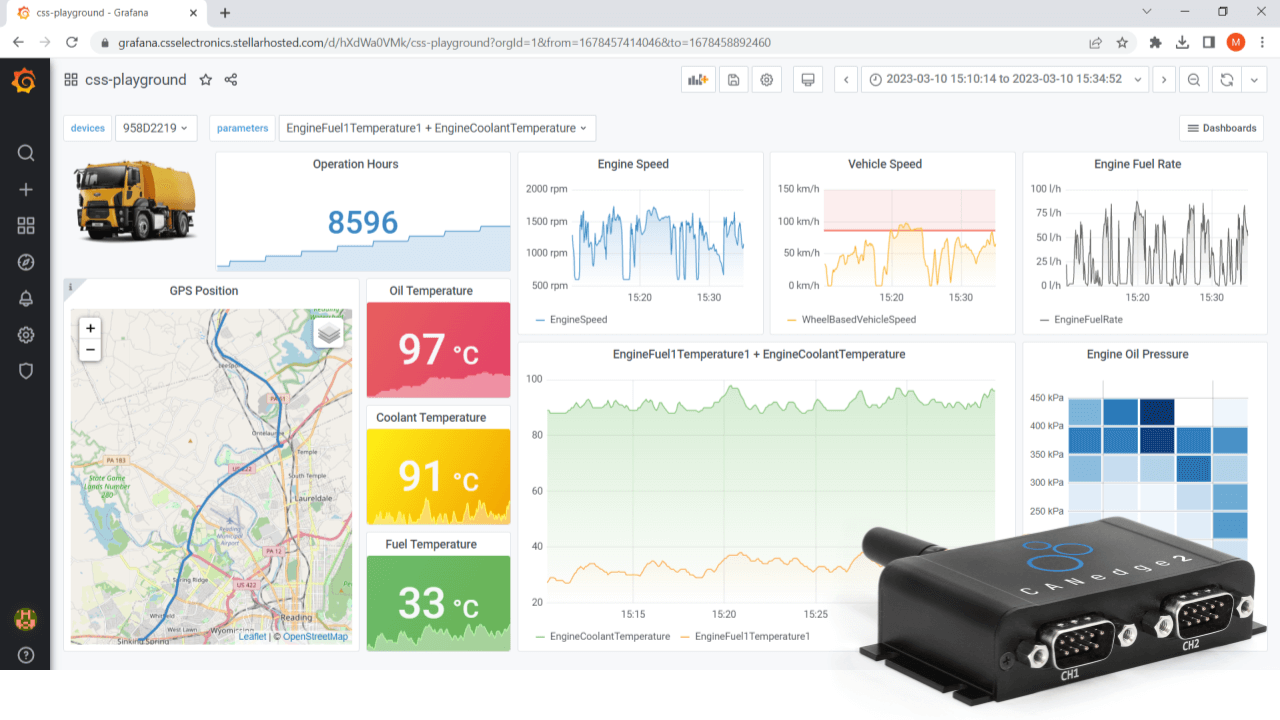 Learn more about
dashboards
Learn more about
dashboards 